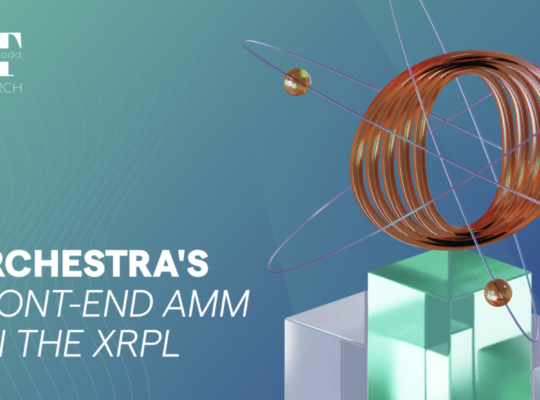
The XRPL’s new native oracle protocol has now integrated with both Band Protocol and DIA, providing trustworthy data in real-time from across many networks. In turn, these oracles will support pricing for various needs, including the upcoming lending protocol (XLS-66d), the XRPL AMM (XLS-30), tokenized financial assets, and more.
This represents another step taken towards providing a complete suite of institutional DeFi products and features on the XRPL.
Below I’ll provide an overview of:
- The XRPL’s native oracle
- Integrations with Band Protocol & DIA
- Next steps for the XRPL
Oracles on the XRPL
Oracles provide a secure and efficient means of bringing real-world data onto a given blockchain system for smart contract use. This is especially important for institutional DeFi, which is core to the XRPL. A reason for this is that most information still exists in legacy Web2 systems like company databases, public markets (e.g. commodities or stocks), and elsewhere.
The XRPL’s Oracle is protocol-native.
This means that it is built into the network itself (rather than being layered on top), the same approach taken as the XRPL’s AMM which is built into consensus itself.
External oracles may then connect and provide price feed data, beginning with both Band and DIA. Oracle providers may also provide other related services, such as Verifiable Random Functions (VRFs) that provide on-chain randomness for projects. Without fast and secure oracles, DeFi’s performance as a whole suffers and is more susceptible to manipulation.
As mentioned, both Band and DIA are first to support the XRPL:
- Band Protocol: A cross-chain data oracle platform that aggregates and connects real-world data and APIs to smart contracts. Their core dataset supports 100+ asset price feeds, while in total they support 175+ cryptocurrencies and 20+ exchange rates and commodities. They have deployed their blockchain network built on Cosmos, meaning that they connect to all IBC-compatible networks.
- DIA: DIA sources market data from a broad array of on-chain and off-chain exchanges and other data sources, across their 50+ supported networks. This includes 45+ on-chain data sources, 25+ off-chain data sources, and support for 3,000 DeFi assets, 20,000+ TradFi assets and 18,000+ NFT collections.
Importance to the XRPL
Many upcoming XRPL protocols require oracles, including:
- The XRPL Lending Protocol: For lending rates, liquidation management, and more.
- The XRPL AMM & DEX: For determining asset prices across all Web2 and Web3 markets.
- The XRPL EVM Sidechain: Support for EVM smart contracts and fast data syncs between the mainnet and sidechain.
- Any Tokenized Assets: For example, the Zoniqx partnership is bringing institutional assets to the XRPL which requires that the prices of real-world assets be streamed on-chain in real-time.
And much more.
All of these relate to institutional DeFi, meaning that there will be significant parties and on-chain volume reliant on both Band and DIA. The integration will also be especially focused on major symbols like $XRP, $BTC, and $ETH, while still supporting many other assets.
Future plans include:
- Integrating more oracle providers
- Supporting more assets that are popular in the broader DeFi ecosystem
- Expanding the range of use cases, including new XRPL DeFi primitives and more tokenized assets
- Interoperability with additional blockchain networks, supported by the Axelar integration
Conclusion
The XRPL’s native oracle is now integrating both Band Protocol and DIA to quickly and securely provide price feed data. This will support key on-chain activities, especially relating to core XRPL DeFi products and features that are being increasingly used by institutional firms.
To learn more about Band Protocol visit https://www.bandprotocol.com/
To learn more about DIA visit https://www.diadata.org/
Interested in building? Learn about all the opportunities on the XRPL with a quick call you can book here.


